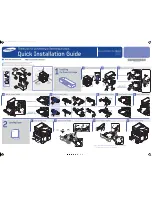
T480
Programmer’s Guide
T480 Unicode and Fonts
100-14362
Rev A
Page 199
Scalable Fonts
Your TransAct
®
EPIC 3000 printer uses outline and/or stroke based scalable fonts.
These fonts provide you with additional font options as well as improved character
appearance, while functioning transparently within legacy applications.
Such fonts represent a substantial improvement over the bitmap fonts that are
traditionally used for thermal printers. Bitmap characters are based on a pixel by pixel
definition of the characters. With a fixed size and fixed character spacing, these bitmap
fonts are limited to specific magnification factors from 2-8X, and required scaling and
smoothing at larger font sizes. Moreover, such scaling and smoothing operations were
often unsuitable for complex fonts such as Asian characters, where changes to pixel
layout actually risk changing character meanings.
To take full advantage of scalable fonts, the EPIC 3000 supports additional commands
and features, including:
1) Character size selection by points
2) Character pitch selection by points
3) Variable character spacing if desired
4) Custom fonts
5) Unicode support for international language support
6) Enhanced code page support for ASCII based applications.
Character Generation
The font technology in the EPIC 3000 printer uses standard outline fonts (sometimes
referred to as TrueType fonts) or stroke fonts. Both technologies are scalable, however
each has unique advantages.
Outline characters
Outline characters use points along the edge of the character to
describe the character. The character generator defines the edge and
then fills in the enclosed space to define the character.
This type of character generation produces very well formed
characters and produces the best looking characters. However, it
requires more storage than stroke fonts, and is best for non-Asian
fonts.
Stroke-based characters
With stroke based characters, the points stored are along the center
line. Less than half the points are needed to render stroke based
characters. This improves character-generation performance and
uses less space.
This type of character generation is fast and efficient, and is ideally suited for Asian
fonts.
















































